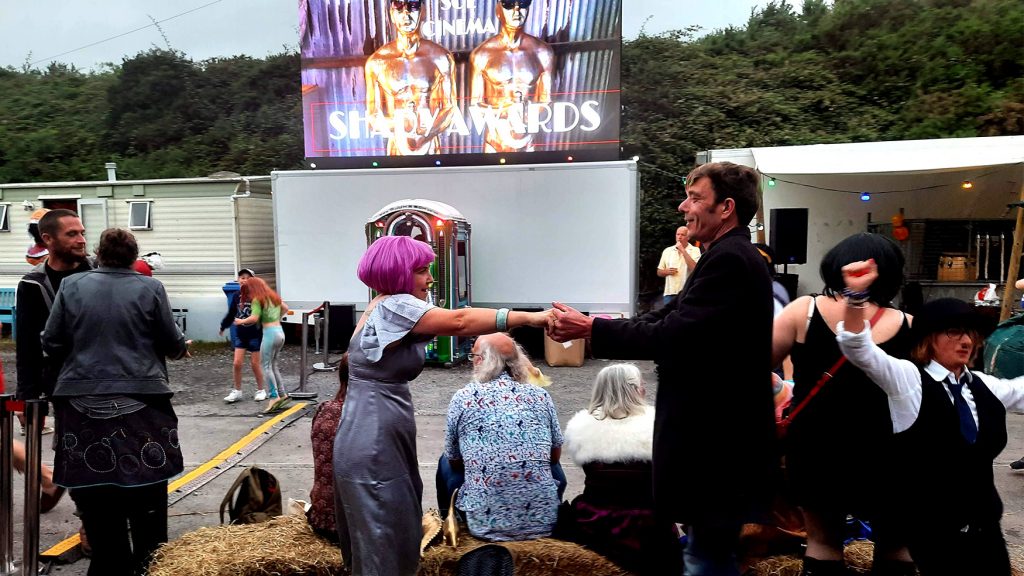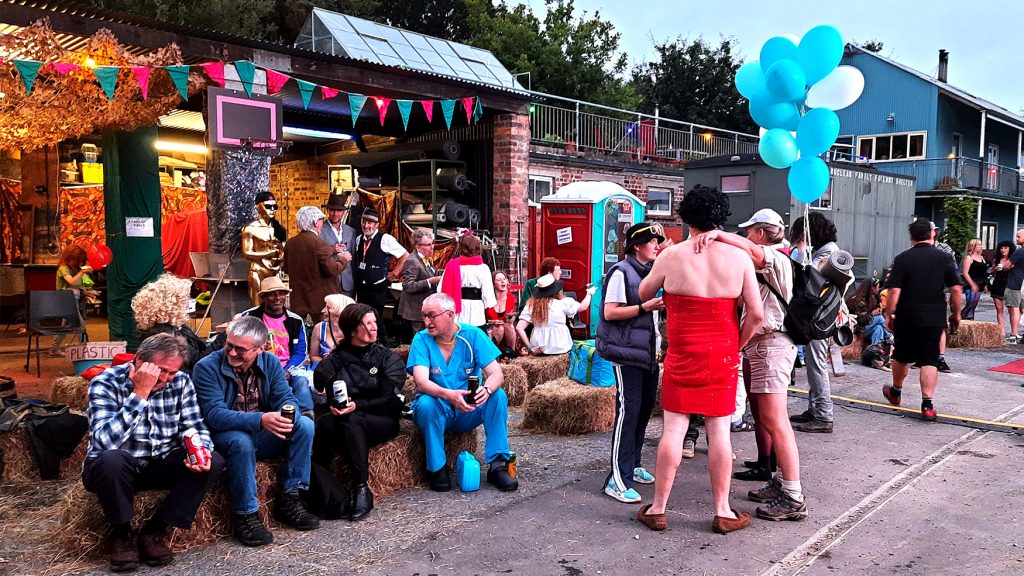Activism is not just demos, flash mobs or sit-in: it comes in different shapes. From videos to words and pictures, how can the art of storytelling support social resistance?
On a Saturday afternoon of mid-summer, a Welsh meadow slowly filled with life. It was not far from Swansea, nestled along the coast of the Gower Peninsula. On a stage, the band practised for their performance. People were chatting in the kitchen whilst gently rolling the pizza dough in little balls. Some guests sat on bales of straws, waiting for the party to officially start. Kids running around, making pop-corns or jumping on a big trampoline. A big screen reflected the colour of fancy dresses and funky decorations.
On one side, a small vintage caravan was the silent protagonist of the night. A mobile solar panel cinema, it is supposed to be the smallest of its kind. It can indeed accommodate about eight adults only, perhaps someone more if they do not mind getting cosy. Dressed like a presenter of an Oscar ceremony, video activist Paul O’Connor walked along the red carpet and reached the stage. “Welcome to the Shady Awards, for celebrating with us the 10th Anniversary of Sol Cinema,” he announced to the crowd. The show was finally on.
Paul co-founded The sol Cinema in 2011. It mainly screens short independent movies at festivals and events. The screenings are always accompanied by usherette performances and freshly made pop-corns. “Because of the nature of it, it attracts people who would never watch an activist film,” said Paul, “not necessarily all activist films, but films that change people perceptions of the world.”
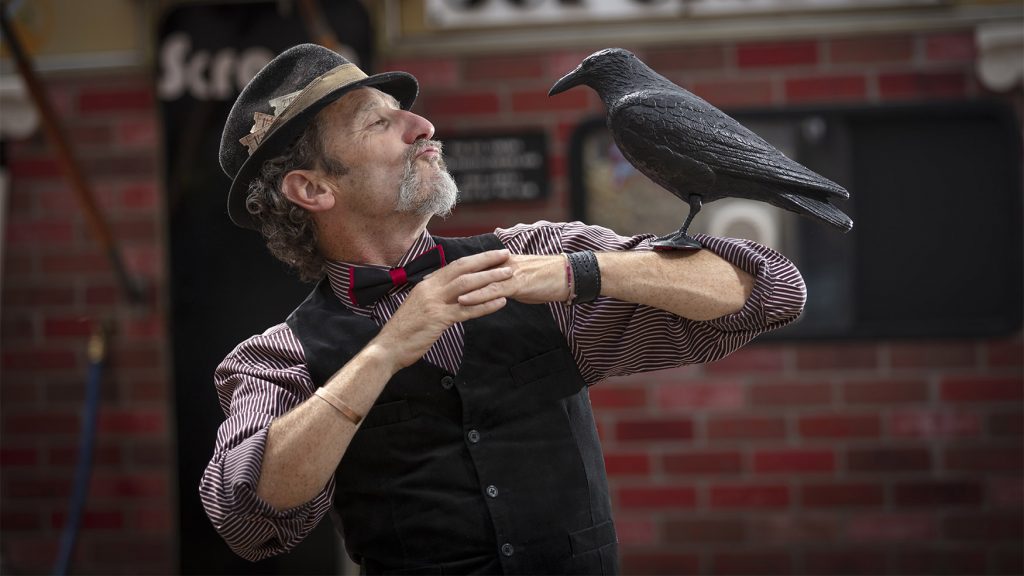
Paul O’Connor works with grassroots groups to help them shaping their communication strategies, whilst carrying on long form documentaries about history, environment and social change. Copyright: Sol Cinema
He explained that his aim is trying to inspire people to think differently. “Everybody wants to do something good like they’ve seen it, time and time again. But, they don’t necessarily know how to do something that’s different or positive or steps outside their box.”
When thinking about activism, the first thing that comes to mind is organising a march, arrange a sit-in or spreading posters for a flash mob. Although, the way that actions are documented and issues reported is crucial for engaging masses within a cause. Stories have the power to connect people. Tales of activism could then rouse consciences, if told well.
Paul realised this back in the early 90s, when he found his vocation right behind a camera. “I ended up back in London and one day, coming through east London, I discovered a protest trying to stop a road. It was the M-11 link road. I was seeing how the media were portraying it and I thought: that’s not what I’m seeing,” he said.
That’s where video activism was the state of mainstream media.
Paul O’Connor, Undercurrents
More he was witnessing, more he thought he had to do something for getting the real story out. So, he sold his camera and got a small video camera: a Sony Handycam camcorder. “I just went out filming the actions. People taking over bulldozers and diggers, or climbing trees, and I’d make short videos. Then, I showed them either at the squats in that evening or in the local Community Center. It had such an impact on people because suddenly they saw themselves being portrayed in a truthful light.”
From that moment, Paul understood the need for telling stories from a different perspective. He produced a movie out of his footage, You’ve got to be choking. In 1993, he co-founded the video production Undercurrents as a mean to distribute the film. With a lot of projects about history, social justice and environmental change under its belt, it is today a big actor amongst the UK alternative news scene.
Globalisation and the media, a documentary that Undercurrents produced in 2001 about the Genoa G8 protests, was so powerful that ended up into the curriculum of media studies courses across the world. “It’s being translated into I don’t know how many languages. It’s one of those films that it caught the time just right and got it out,” said Paul. “That’s where video activism was the state of mainstream media.”
Paul O’Connor is just one of many activists who learned how to exploit the art of storytelling for promoting social change. Alternatives media narratives are indeed a vital component of grassroots activism. As University of York Professor Susan Forde conclude in her book Challenging the News: The Journalism of Alternative and Community Media, alternative journalists’ immersion in the community facilitates the interaction with citizens as well as their involvement in the media outlets.
On another summer morning in Bristol, activist-blogger James Wards took part of a small demonstration. It was the starting point of the annual bike ride organised by the Palestine Solidarity campaign. On top of their bike, activists were getting ready for their journey. It would take them 4 days to reach London, their final destination. No other local media were there, James was the only one reporting on the event.
“To resist current trends in governments and society, more people need to take responsibility for their own actions and making a change in the world. So, getting into activism is absolutely crucial,” said James. “I thought: if I can start a website and speak to people who are in activism and just digging down why they do it and at the same time showing them as ordinary people, maybe that will help inspire other ordinary people to think, well I could do it too.”
Former Extinction Rebellion organiser, he started The Bristol Activist in February with the aim of keeping the conversation around activism in the city open and accessible to a wider public. He also wanted to create a space where breaking down some of the silos that exist amongst different activist movements.
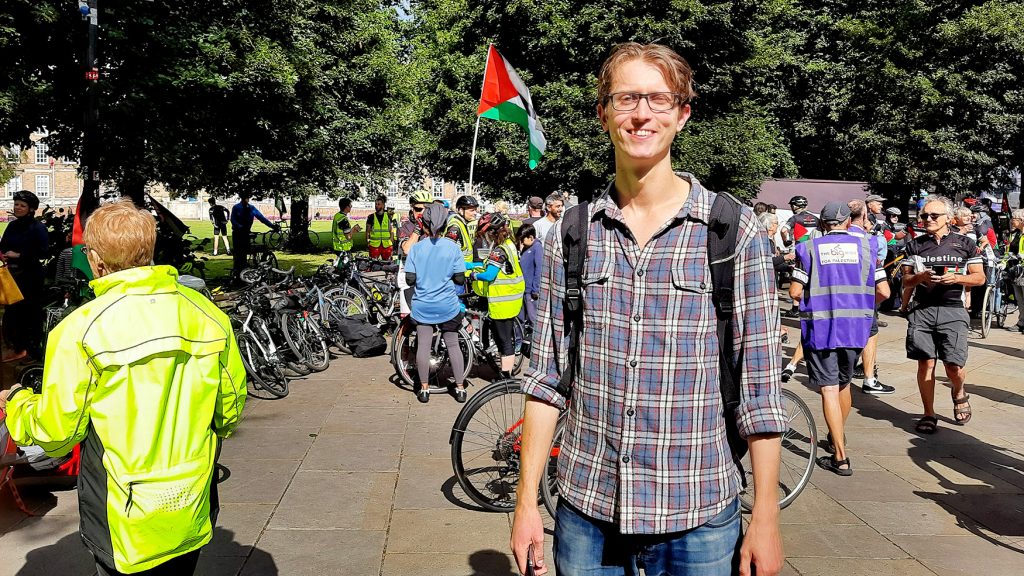
“Personally, it was about just thinking: what can I do with my skills to help activist movements? Because I’m not a very good activist really. I don’t like being in the streets, I’m not very good at that. But, I can write, do research and interview people,” he said.
The Bristol activist features news, analysis and interviews in a written form. It focuses on progressive activism, like environment and social justice. It aims to create a space for those actions that they do not reach mainstream media. For now it is just James producing content, but in the future he would like to turn it in a more collaborative type of site.
“I was an ordinary person who found himself in extraordinary circumstances and made a decision to stand up and do something. And that’s what activism is. That’s how it starts. So yeah, what I would like is for just as many people as possible to see that and then be able to feel for themselves,” said James.
Having gone from being involved in planning activism to writing about it, James said to report on protest in a way that mainstream journalists often do not. The blogger still attends protests and gets involved. He does not stay on the sideline of the event, but he rather march with other activists. He wants to feel the energy for empathising within the cause.
“In mainstream coverage of protests they never stopped to even consider that activists are people. They just see the crowd or in worst cases the mob,” said James. “They never bothered to ask to individual protesters, why are you here? What does it mean to you being here? As soon as you do that, you uncover all these amazing reasons that people have.
“That is just huge. If that was in the mainstream papers, it would completely shake up the dominant narrative about protests. In today’s largest scene, protesters are seen in a bad way.”
I was an ordinary person who found himself in extraordinary circumstances and made a decision to stand up and do something. And that’s what activism is.
James Ward, The Bristol Activist
Researchers have indeed conceptualise this tendency across mainstream media to cover political protest in a negative way. Under the name of protest paradigm, such coverage generally focuses on violence and spectacle. Whilst radical and citizen journalists favour a reporting that stresses the political and social issues that causes uprisings.
The way a story is told and framed deeply shapes how readers listen and empathise with the characters. The report of a protest can then legitimise or not its cause. Trough mastering the art of storytelling together with their goal of promoting social action, alternative journalists can connect with the community in a way that mainstream often cannot.
Although they often lack of resources to carry on bigger project, radical media seek to tell a side of the story that is often overlooked by big corporate outlets. “I think the value of independent media on a smaller scale is that you just hear different voices. It’s much more granular,” said James, “you get a more human side of it. You can dig into different angles, like motivations. It just connects with the reader more.”
As Susan Forde wrote again in her book, the value of radical media is indeed giving a voice to the voiceless while filling the gap left by mainstream outlets. This process aims to empower ordinary people to participate in democracy, whilst offering them information they cannot otherwise access.
This idea was precisely the one behind the creation of Voice.Wales. Co-founder and editor Seb Cook said: “We definitely thought that we wanted to speak to the people that are at the sharp end of these issues. We wanted to try and engage them doing long interviews because they would be saying some of the stuff that are the most lucid, articulate and powerful. So, it was just about finding them and getting their voices out there.”
Seb found his journalistic vocation about seven years ago, when he started taking pictures of a family strongly hit by the bedroom tax. For over a year, he kept going back to their house to photograph them. He could see how this measure amplified their struggles, throwing them in a deeper state of poverty.
After few visits, he decided to ask for an interview. He produced an article out of it, managing to publish it on the Welsh Agenda. He got then commissioned other pieces, but he was feeling that it was not really the right mean to distribute the content he wanted to. During a political meeting he met Veronica, a photography student who was sharing the same feelings and aspirations.
“We just felt that on the left radical media there wasn’t actually any real desire to do proper journalistic work. Going out and speaking to people, researching stuff and actually tell stories,” he said.
Stories have the power to connect people. Tales of activism could then rouse consciences, if told well.
So, in 2019 they created Voice.Wales with the goal of delivering analysis and facts rather than opinions. The platform mainly focuses on news, in-depth features and investigations in different formats, from written articles to videos and podcasts. It aims to tell the different lines around social issues.
When Seb published the story of some black teenagers being targeted by the South Wales Police, he could not believe such an impact it would had. He wrote a report about a mother lamented that her two teen children have been targeted after lighting up the torch to officers during the BLM protest following the death of Leighton Jones. Voice.Wales kept following the story when the 19-year-old boy faced court, for then being fined. At that point, some people commented on their posts offering their help. The family opened a crowdfunding and raised enough money to cover all the expenses.
“It’s not so much about getting paid, which is great. It’s more about the fact that we were the only people actually following this thread,” said Seb. He also explained that his aim is now conducting a bigger investigation into the events.
How have digital technologies shaped the radical media landscape?
Since the advent of Internet, activists and alternative journalists around the world have been taking advantages of the potential of this new digital world. Product of the anti-globalisation movement, Indymedia or the Independent Media Center (IMC) could be considered the pioneer of contemporary radical and citizen journalism.
The project started in 1999 when a group of activists got together in Seattle, for then developing connection across the world. There were people with video and radio skills, others specialised in podcasts or writing. Some more were taking care of the IT side. Although, the project eventually died out around 2011.
“It was really exciting times and worked really well for few years, but after the people with the IT skills became more dominant. It just became more convoluted to use because they were thinking about how technical they can be, and in the meetings just became crazy. So, after a while all the creative people left,” said Paul O’Connor, who was actively involved within the project.
Several factors contributed to the network’s failings. First of all, the advent of social media deeply transformed the approach to the Web. As Keel University Eva Giraud described in her research, these platforms changed the logic of networking to one of aggregation. In the UK, different views amongst regional IMC collectives led to a fracture throughout the network. The Mayday collective tried to keep the old UK site working, whilst Be The Media acting as aggregators for other local collectives across the country.
According to Paul, it is something inevitable for this type of media. “Every counter culture media is like that, ourselves included. We split twice just because of different mindsets, different ages, burnout, everything. I think it’s just the nature of political movements. They have their time and then they die out. But they leave seeds and Indymedia left a lot of seeds. They have sprouted up in all sorts of different ways,” he said.
Social media and smartphones revolutionised even more the radical media landscape. For the first time, everyone can express their political and social concerns online as well as produce their own content very easily. The time needed is just a click. This brought to a rise in citizen journalism across the globe as a common practice.
Even though social media are a powerful tool, especially to give voice to marginalised communities, they make misinformation easy to spread. Plus, the information overload that circulates across these platforms often produces just mere shallow conversations. For not talking about their algorithmic nature that contributes to create echo-chambers of polarised views.
On this point, James from The Bristol Activist said: “We live in an age where the value of fatness is being eroded and people just kind of say what they want. Social media has become our lens onto reality which fractures and distorts a lot of things.” For this reason, he explains that with his blog he wants to just record the facts as best as he can.
Also for Seb of Voice.Wales, the importance of radical media lies in the fact that they can convey an authoritative voice that citizen journalists and opinions blogs cannot reach. Content published from a website can give to the issue more legitimacy, more weight.
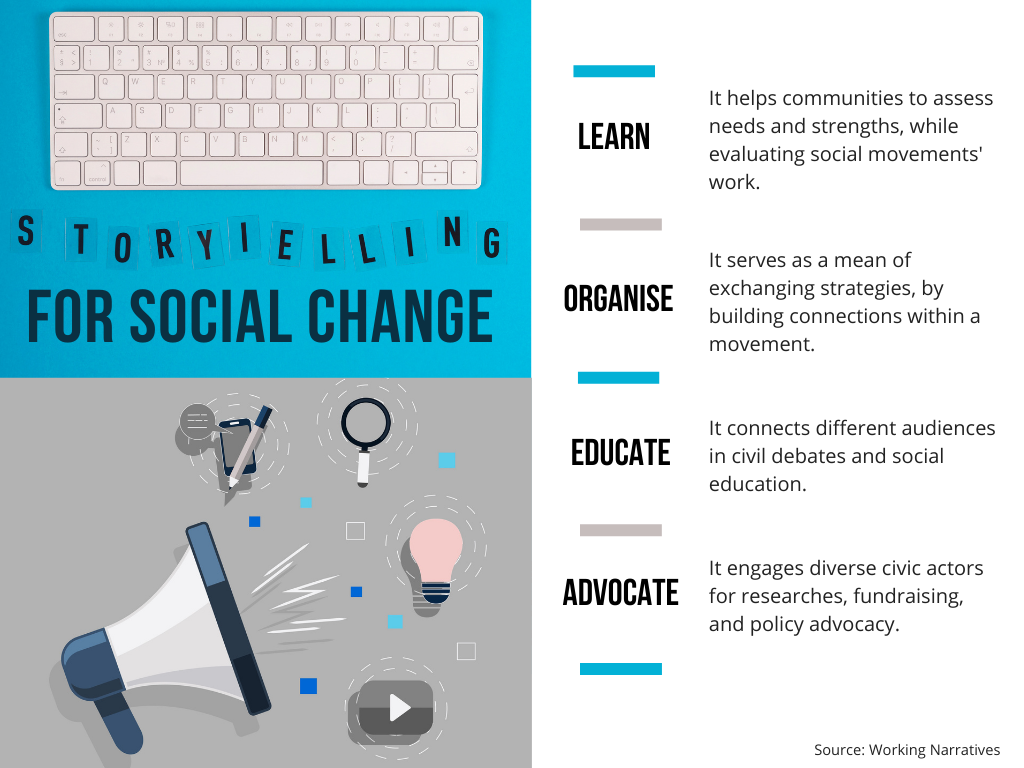
Undercurrents co-founder Paul said to be also sceptical about the benefits that live streaming, another main innovation brought by smartphones and social media, could bring to social causes. Even though they are a useful medium of counter surveillance, the experienced video activist said that this could actually produce opposite results. “Live streamers will go where the excitement is, where the action is. I don’t think it’s a great idea,” he said.
In an age where everyone can broadcast and produce content within a blink of an eye, radical media outlets seem then more needed than ever. The art of storytelling has always had the power to produce emotions and actions in its receivers. Words by words, images by images. Exploiting its full potential is something that technology can just facilitate, rather than replace.
As Paul put it, activism is a technique where the technology is only a part of it. “I think people do get lost in the technology side of it. As other spaces, video activism is how you use that tool or video to bring about some sort of change,” he said.
“The trick with it is working out why you’re doing it. How long are you committed to this for and what do you actually want to achieve with it?”

